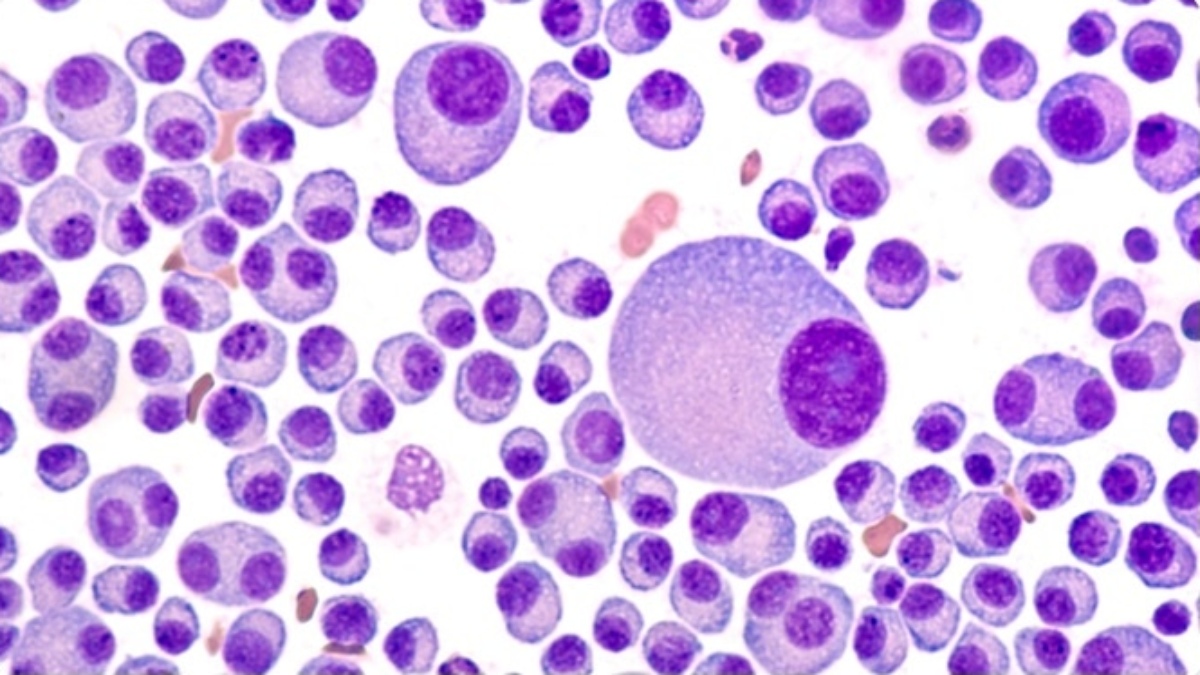


Multiple myeloma is a type of blood cancer in which there is excess production of white blood cells, especially plasma cells. Plasma cells are the end-stage or most mature variant of B-Cells, the latter being responsible for the antibody formation in the body and for immune response. The B-Cells originate in the bone marrow and hence Multiple Myeloma starts commonly in the bones, however may later affect other organs as well. Actress -politican Kirron Kher was recently diagnosed with multiple myeloma.
COMMON SYMPTOMS
a) Bone pains, commonly affecting the central or axial bones of the vertebral column, pelvis and hips, skull bones, followed by ribs, sternum, clavicles, long bones of arms and legs
b) Weakness, fatigue, weight loss with low haemoglobin (anaemia), high calcium levels in the blood
c) Mental fogginess
d) Constipation
e) Kidney failure in advanced stages due to the breakdown of myeloma proteins and blockage of kidneys
f) Frequent infections due to reduced immunity
g) Bone fractures with minor trauma
h) Paralysis of upper or lower limbs or loss of bladder and bowel control in case the Myeloma is growing inside the vertebra and pressing the spinal cord
CAUSES
The definite causative factors for Multiple Myeloma are not
known, however the risk factors include
a) Age >60 years
b) Male gender
c) Family history of multiple myeloma
d) Pre-existing Monoclonal Gammopathy of un- determined significance (MGUS)
HOW TO DIAGNOSE IT?
The recommended tests for diagnosing Multiple Myeloma are
a) Complete blood counts – can pick up anaemia, high white cell count, low platelets
b) Serum electrophoresis – a special blood test to identify the monoclonal (M) band of myeloma protein/s and the type of Myeloma and estimate the quantity of Myeloma protein production
c) Kidney function tests may show a high level of creatinine, urea, calcium or uric acid
e) Liver function tests may show a reversal of albumin and globulin ratio with a high globulin level
f) Bone marrow biopsy is a test done to find out the number of plasma cells in the bone marrow
g) Radiology imaging- Total body X-Rays may show punched out bones where the myeloma has affected the bone. A CT scanner PET-CT can show the whole body myeloma involvement at an earlier stage than an X-RAY.
Sometimes the physician may ask for an MRI of the affected vertebra to see the level of the collapsed vertebra and whether a patient needs surgery /radiation to improve the neurological function.
The treatment of Multiple myeloma depends upon the stage of the disease and it is classified into 3 stages I, II, III.
The treatment includes symptom relief, reduction in bone pain, preventing complications like kidney failure, fractures and paralysis.
It includes Targeted therapies, chemotherapy, steroids, immunotherapy, Bone marrow transplant, renal dialysis, surgery, and radiation therapy.
Besides the disease directed therapy the common things recommended for a patient are adequate water intake to remove the Myeloma proteins by proper flushing of kidneys (urination) and keeping up a good mobility/exercise program to avoid bone loss.
The writer is Chairperson Radiation Oncology, Cancer Institute, Medanta – The Medicity.